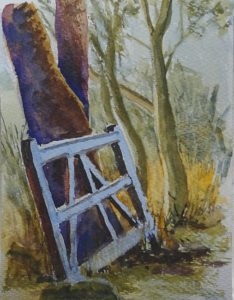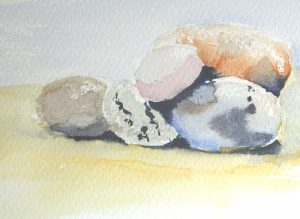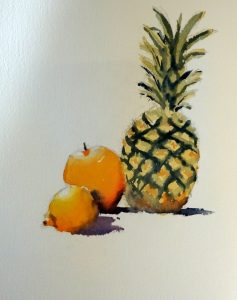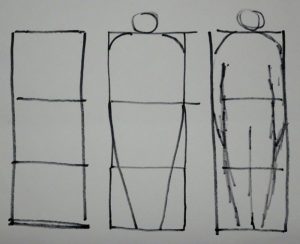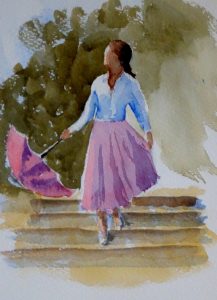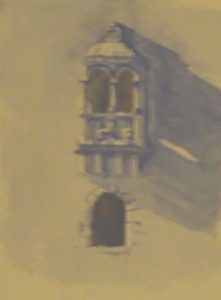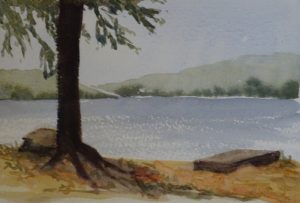Painting is beginning to fill my thoughts – though it is still having to fight the garden for top place. My new friend sent me flowers as a thank you for introducing her to Hazel Soan, and one of Hazel’s demonstrations was about painting flowers. I felt impelled to try painting them even though flowers is not one of my usual subjects. And I have to say I rather pleased with the result so far.
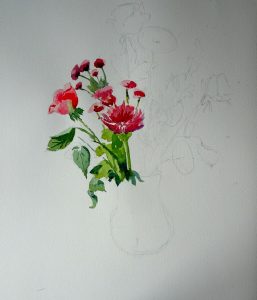 It really does leap off the page, not just in the photograph,which can sometimes happen – a really enjoyable quiet hour. Unfortunately, that was just before Easter when family activities and beautiful weather meant I had to stop there. I want to finish it and took a photo to that end, but that quiet time painting from life has made me want to try it more often. Of course, I am fearful of ruining it.
It really does leap off the page, not just in the photograph,which can sometimes happen – a really enjoyable quiet hour. Unfortunately, that was just before Easter when family activities and beautiful weather meant I had to stop there. I want to finish it and took a photo to that end, but that quiet time painting from life has made me want to try it more often. Of course, I am fearful of ruining it.


